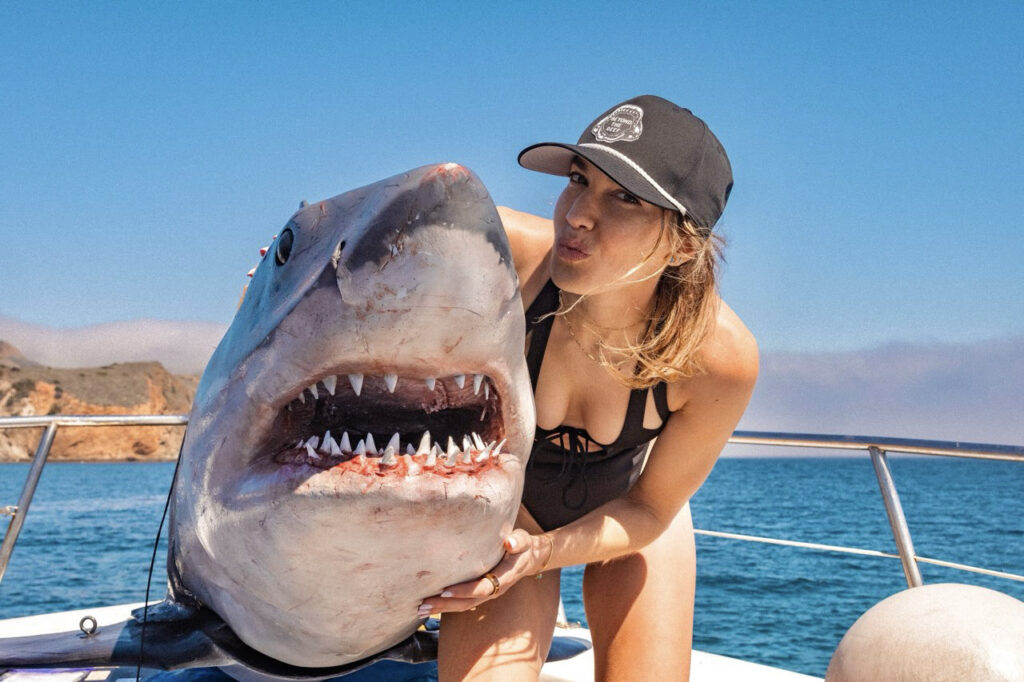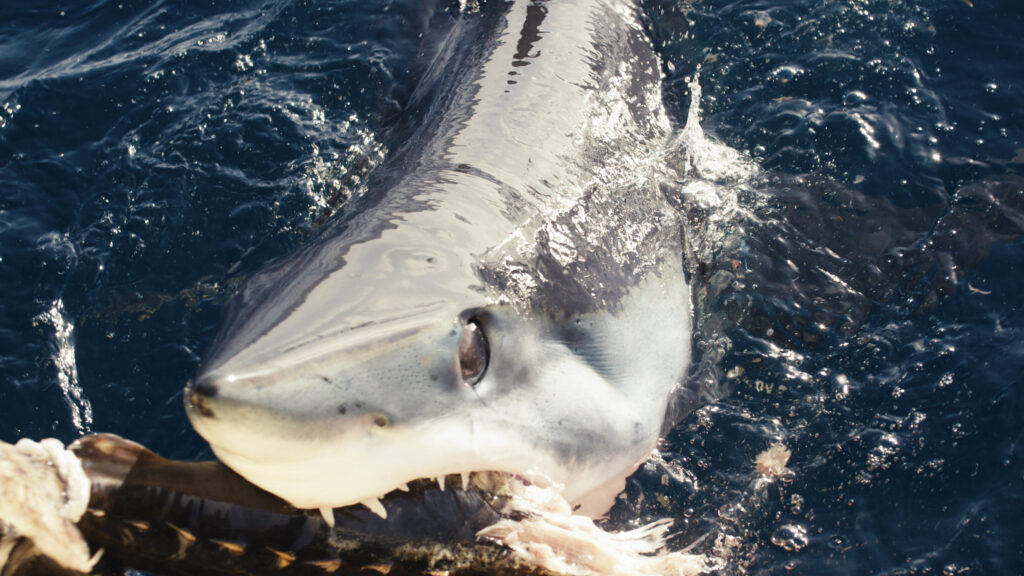
Author: Xavier Scudder
This Shark Week, ocean explorer and wildlife researcher Kendyl Berna returns to the screen with one of her most compelling investigations yet: a deep dive into the elusive and possibly brand-new species known as the Black Mako. Kendyl recently spoke with us about the science, strategy, and humanity behind swimming with apex predators and why she’s not trying to ride them.
Watch “Black Mako of the Abyss”
Black Mako of the Abyss premieres at 10 PM ET/PT on Discovery, with Kendyl Berna joining shark tagger Paul de Gelder and Keith Poe to uncover a mysterious creature unlike anything documented before. When Keith Poe first saw the 13-foot shark with jet-black skin, he knew it was different. Now, this team of experts attempts to lure the beast from the depths and determine if it’s a mako, a mutant, or even a mako–great white hybrid.

The Science Behind the Search
In our interview, Kendyl shared how this unusual predator became a Shark Week priority. “There’ve only been two documented sightings of longfin makos in California waters; back in the ’90s,” she explained. “So to even capture footage of one was huge.”
What makes this shark so baffling is its physical mismatch: it has the body of a shortfin mako but the darker coloring of a longfin; two closely related species rarely confused in the wild. “We don’t have a DNA sample yet,” she said, “but even getting to document it helps the science move forward.”
Braving the Abyss
With Geek Therapy’s lens on resilience and mental health, we asked Kendyl how she prepares for the unknown. She credits teamwork and familiarity with the process. “This was my third time filming with makos, so I knew the crew and I trusted my dive partner,” she said. “That makes all the difference.”
Kendyl stays grounded by respecting her environment. “I always have a healthy fear. I’ve worked with people who are a little too bold in the water. I’m not trying to ride the sharks.”

Beyond the Makos
When asked what deep-sea creatures she’d study next, Kendyl lit up talking about sperm whales and their mysterious communication. “As AI and machine learning improve, I think we’ll be able to start decoding their language,” she said. “Hydroacoustics is really exciting to me right now.”
She also gave a nod to the bizarre cookie cutter shark, which leaves telltale circular wounds on its prey. “They latch on, and if the animal speeds up, they stay with it—and take a cookie-sized bite.

